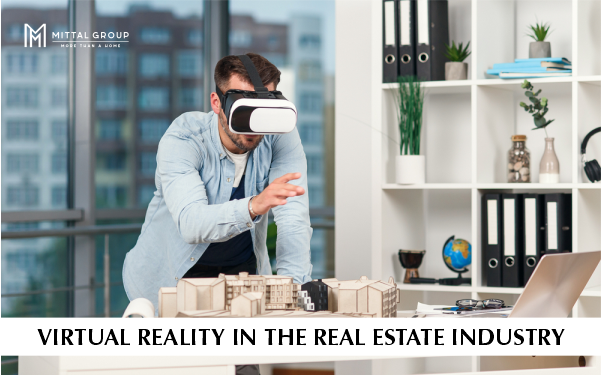As the world continues to transition from real to digital, so do many aspects of our life. Personal life, social life, assets, and experiences too. This movement has prompted businesses to ride the digital wave as well. And not just when it comes to the marketing aspect of it. The entire product experience is now also becoming virtual. The real estate sector is not far behind with respect to this change.
The introduction of VR or Virtual Reality is proving to be a crucial point for both real estate developers and the end-consumer and here’s a list of some of the most significant benefits :
- Time
Thanks to Virtual Reality, potential homebuyers can save time traveling from property to property to find their dream home. Instead, they can enjoy a virtual experience with immersive tours of properties from the comfort of their homes and that too, at any time that they please. Although this is yet to come into the market with full effect, the world of VR is only gaining momentum. - Reach
With Virtual Reality, you are no longer confined within your city. A big plus for both developers -who can now approach potential long-distance clients- as well as the end-buyer can do away with traveling all the way to a different city in search of their dream home. - Money
While it may seem expensive to develop 3D experiences, one must not forget to consider the cost of conventional property visits and tours, which are in fact much higher and involve costs for staging, photography, printing, and material. - Marketing
It does not matter if the property is fully or partly developed. Virtual Reality allows real estate developers to offer a complete experience to the client by showing them the finished, fully-furnished space with both interiors and exteriors- even if the property is still in the construction phase. - Ownership and Connection
VR allows a home-buyer to fully experience and visualize the space for as long as they want. They can, without interruption notice the details and make informed and carefully thought decisions at their convenience.
When it comes to these virtual tours in 3D, here are the 2 formats that real estate developers use:
Guided visits
These are like any conventional brand videos, but different in the sense that they may be fully virtual or in the form of 360-degree videos.
All the developers need to do is create these videos with a panoramic camera that can capture 360-degree views of the space, and provide the buyer with a VR headset that can allow them to enjoy an immersive experience of the tour of the house.
Interactive Visits
Here, the home-buyer can click on any point in their vision field to understand more about that particular space. Although more expensive than the former, these kinds of tours are interactive and allow potential buyers the freedom to linger more or less on a particular portion of the house, just like one would in a real-life visit.
In conclusion, VR is bound to become the next big thing in the real estate space and developers are very likely to adapt and offer their customers high-end virtual experiences while they sit comfortably at home.

